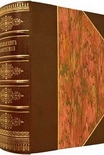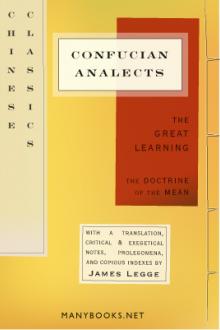Myths and Legends of China by E. Werner (free ebook reader for iphone TXT) 📗

- Author: E. Werner
Book online «Myths and Legends of China by E. Werner (free ebook reader for iphone TXT) 📗». Author E. Werner
8 “Formerly, I, Chuang Chou, dreamt that I was a butterfly, flying about and feeling that it was enjoying itself. I did not know that it was Chou. Suddenly I awoke and was myself again, the veritable Chou. I did not know whether it had formerly been Chou dreaming that he was a butterfly, or whether it was now a butterfly dreaming that it was Chou.” Chuang Tzŭ, Book II.
Chapter IV
The Gods of China
The Birth of the Soul
The dualism noted in the last chapter is well illustrated by the Chinese pantheon. Whether as the result of the co-operation of the yin and the yang or of the final dissolution of P’an Ku, human beings came into existence. To the primitive mind the body and its shadow, an object and its reflection in water, real life and dream life, sensibility and insensibility (as in fainting, etc.), suggest the idea of another life parallel with this life and of the doings of the ‘other self’ in it. This ‘other self,’ this spirit, which leaves the body for longer or shorter intervals in dreams, swoons, death, may return or be brought back, and the body revive. Spirits which do not return or are not brought back may cause mischief, either alone, or by entry into another human or animal body or even an inanimate object, and should therefore be propitiated. Hence worship and deification.
The Populous Otherworld
The Chinese pantheon has gradually become so multitudinous that there is scarcely a being or thing which is not, or has not been at some time or other, propitiated or worshipped. As there are good and evil people in this world, so there are gods and demons in the Otherworld: we find a polytheism limited only by a polydemonism. The dualistic hierarchy is almost all-embracing. To get a clear idea of this populous Otherworld, of the supernal and infernal hosts and their organizations, it needs but to imagine the social structure in its main features as it existed Page 94throughout the greater part of Chinese history, and to make certain additions. The social structure consisted of the ruler, his court, his civil, military, and ecclesiastical officials, and his subjects (classed as Scholars—officials and gentry—Agriculturists, Artisans, and Merchants, in that order).
Worship of Shang Ti
When these died, their other selves continued to exist and to hold the same rank in the spirit world as they did in this one. The ti, emperor, became the Shang Ti, Emperor on High, who dwelt in T’ien, Heaven (originally the great dome).1 And Shang Ti, the Emperor on High, was worshipped by ti, the emperor here below, in order to pacify or please him—to ensure a continuance of his benevolence on his behalf in the world of spirits. Confusion of ideas and paucity of primitive language lead to personification and worship of a thing or being in which a spirit has taken up its abode in place of or in addition to worship of the spirit itself. Thus Heaven (T’ien) itself came to be personified and worshipped in addition to Shang Ti, the Emperor who had gone to Heaven, and who was considered as the chief ruler in the spiritual world. The worship of Shang Ti was in existence before that of T’ien was introduced. Shang Ti was worshipped by the emperor and his family as their ancestor, or the head of the hierarchy of their ancestors. The people could not worship Shang Ti, for to do so would imply a familiarity or a claim of relationship punishable with death. The emperor worshipped his ancestors, the officials theirs, the people theirs. But, in the same way and sense that the people worshipped the emperor on earth, as the ‘father’ of the nation, namely, by adoration and Page 95obeisance, so also could they in this way and this sense worship Shang Ti. An Englishman may take off his hat as the king passes in the street to his coronation without taking any part in the official service in Westminster Abbey. So the ‘worship’ of Shang Ti by the people was not done officially or with any special ceremonial or on fixed State occasions, as in the case of the worship of Shang Ti by the emperor. This, subject to a qualification to be mentioned later, is really all that is meant (or should be meant) when it is said that the Chinese worship Shang Ti.
As regards sacrifices to Shang Ti, these could be offered officially only by the emperor, as High Priest on earth, who was attended or assisted in the ceremonies by members of his own family or clan or the proper State officials (often, even in comparatively modern times, members of the imperial family or clan). In these official sacrifices, which formed part of the State worship, the people could not take part; nor did they at first offer sacrifices to Shang Ti in their own homes or elsewhere. In what way and to what extent they did so later will be shown presently.
Worship of T’ien
Owing to T’ien, Heaven, the abode of the spirits, becoming personified, it came to be worshipped not only by the emperor, but by the people also. But there was a difference between these two worships, because the emperor performed his worship of Heaven officially at the great altar of the Temple of Heaven at Peking (in early times at the altar in the suburb of the capital), whereas the people (continuing always to worship their ancestors) worshipped Heaven, when they did so at all—the custom being observed by some and not by others, just as in Western countries some people go to church, while others Page 96stay away—usually at the time of the New Year, in a





Comments (0)